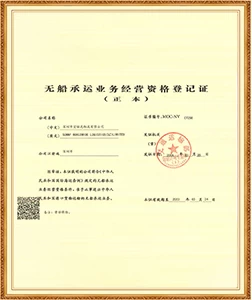warn! Forced to suspend sailing!
Sunny Worldwide LogisticsIt is a logistics company with more than 20 years of transportation experience, specializing in markets such as Europe, the United States, Canada, Australia, and Southeast Asia. It is more of a cargo owner than a cargo owner~

As the U.S. East Coast longshoremen strike approaches, the shipping industry is experiencing unprecedented difficulties.
Japanese container shipping giant ONE issued a warning, predicting that the strike would force a complete suspension of all container ships heading to the east coast.
ONE CEO Jeremy Nixon noted during a break at the Asia Marine Moneys conference in Singapore that many container ships scheduled to unload at east coast ports will have to shut down their engines and wait for a solution, a situation that is expected to bring down the ports in less than a week. and the docks were paralyzed.
Jeremy Nixon said: “We are now preparing for September 30, when all terminals on the East Coast are expected to cease operations. The vast majority of our customers have brought forward their freight orders to minimize the risk. Although a few customers have placed some Cargo moved to the West Coast, but the vast majority did not change course.
We will not be allowed to transfer vessels that normally call at East Coast terminals to the West Coast after September 30, and vessels now heading to the East Coast will have to wait until the strike disruption is resolved. "
The strike stems from the failure to reach a new collective bargaining agreement between the International Longshoremen's Association (ILA) and employers' association USMX. The ILA announced earlier this month that some 70,000 dock workers would go on strike on October 1 if no agreement was reached before the strike.
The ILA's core demands include strengthening provisions on automation in key collective agreements to ensure dockworkers are not displaced by technological advances. In addition, ILA also requested a 77% salary increase and rejected the 40% increase proposed by USMX.
The tension stems from a breakdown in early negotiations, with the ILA arguing that APM Terminals had breached the parties' agreement by using automated systems within the framework of the existing agreement. Although representatives of the Biden administration have repeatedly stated that they will not intervene in the dispute, tensions in the industry continue to escalate.
The West Coast, Mexico and Canada are not viable alternatives in light of the impending strike. Currently, ports and terminals on the West Coast are operating at high capacity and are unable to handle the volume of transferred cargo.
As a result, trade scheduled to arrive on the east coast in the coming weeks has come to a near-total halt, leaving ships stranded in Asia and Europe.
Jeremy Nixon emphasized that there is almost no idle capacity in the industry, and all ships are allocated to routes with strong demand. Detours on routes around South Africa have resulted in almost zero available capacity in the market.
He noted that the conflict in the Red Sea and the diversion of ships on long voyages have made operations more difficult. This imbalance between supply and demand has exacerbated market instability.
In the current situation, Jeremy Nixon mentioned that although the industry is expected to face certain headwinds in 2024, in fact, the industry is actually enjoying "tailwinds" from ship diversions.
Although the new shipping capacity is approximately 10%, due to the sharp increase in demand and the ongoing Red Sea crisis, the additional ships cannot effectively alleviate market pressure.
Jeremy Nixon said that ports in Mexico and Canada are also currently operating at very high utilization rates and cannot handle more freight demand. This situation has caused the industry as a whole to face great uncertainty, making future predictions increasingly difficult.




















